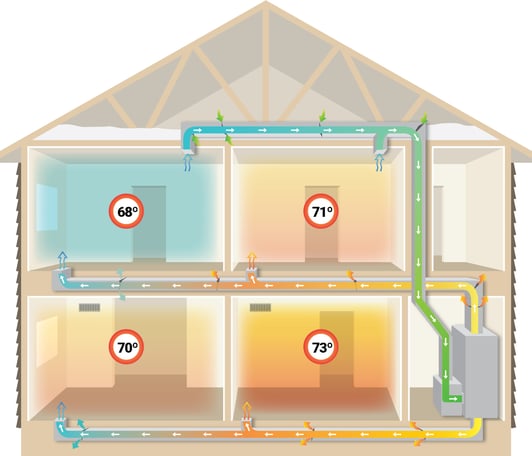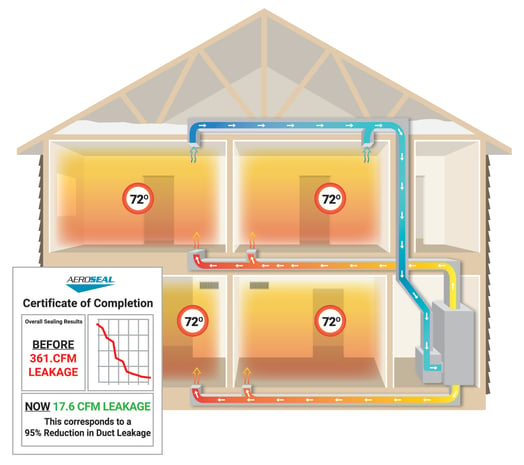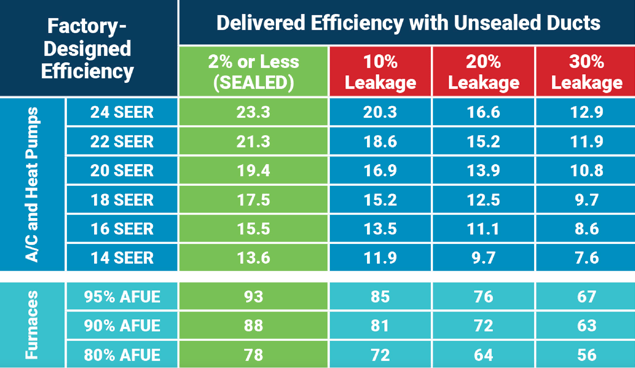
Aeroseal is a duct sealing technology that was developed to address the problem of duct leakage in buildings. Duct leakage occurs when the air that is meant to be delivered to different parts of a building leaks out of the ducts before it reaches its intended destination. This can lead to a range of issues, including reduced indoor air quality, increased energy consumption, and higher operating costs.
The Aeroseal technology works by injecting a sealant into the ductwork of a building, which then seals any leaks or gaps in the ducts from the inside out. The sealant is a polymer-based material that is safe and non-toxic, and it is designed to adhere to the edges of the leaks and gaps, forming a seal that is airtight.
The Aeroseal process begins with an inspection of the building's ductwork using specialized equipment that can detect the location and size of any leaks or gaps. Once the leaks are identified, the Aeroseal equipment is connected to the ductwork, and the sealant is injected into the system.
As the sealant is injected into the ducts, it is carried to the leaks and gaps by the air pressure in the system. The sealant is then forced out of the leaks and gaps, where it adheres to the edges of the openings and begins to form a seal. The process continues until all of the leaks and gaps in the ductwork are sealed.
The Aeroseal technology has been shown to be highly effective at sealing leaks and gaps in ductwork, with the ability to seal up to 90% of leaks in some cases. The technology is also non-invasive, meaning that it does not require any major modifications to the building's HVAC system, and it can be completed in just a few hours.
Overall, Aeroseal is an effective and efficient way to address the problem of duct leakage in buildings. By sealing the ducts with Aeroseal, building owners and operators can improve indoor air quality, reduce energy consumption, and lower operating costs, all while maintaining the comfort of building occupants.




Before
After
AEROSEAL


Heating and cooling efficiency is measured by SEER (Seasonal Energy Efficiency Ratio) and AFUE (Annual Fuel Utilization Efficiency) ratings. SEER measures how efficiently an air conditioning system operates during the cooling season, while AFUE measures how efficiently a furnace converts fuel into heat over an entire heating season.
Duct leakage can cause air to leak out of the ducts, making it harder for your heating and cooling systems to maintain the desired temperature. This results in decreased efficiency and increased energy costs.
To understand the impact of duct leakage on efficiency, consider the following chart.
As the chart shows, as duct leakage increases, both SEER and AFUE ratings decrease, indicating decreased efficiency
Impact of duct leakage on the efficiency of heating and cooling systems
The Aeroseal Process
It involves a water base sealant that is blown into ductwork/pipe, where it fills gaps and holes making it airtight


